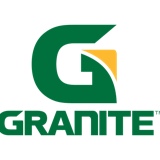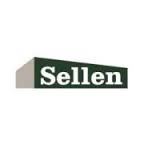General
-
GRANITE CONSTRUCTION CO. - SAFETY PROGRAM EVALUATION
This evaluation worksheet is intended to be completed by manager/professional as part of their regualr work area safety inspection process. This evaluation is not inteded to be an indepth Audit of the work area, but rather a high level evaluation that will allow the professional to provide immediate feedback to the project team of items that can be improved. Once completed the form will provide a score for each area evaluated. Please remember that if you find an area where an immediate danger to personnel, the genreral public or the environment exists you must STOP the work and correct the defficiency immediately. -
Document No.
-
Project Name
-
Conducted on
-
Prepared by
Program Evaluation
-
INSPECTION DATE
-
PROJECT NAME
-
Add location
-
PROJECT MANAGER
-
FRONTLINE SUPERVISOR
-
SAFETY MANAGER
SUPPLEMENTAL WORK EXPOSURES
-
Select the SUPPLEMENTAL WORK EXPOSURES covered under this evaluation
- Respiratory Protection
- Confined Space
- Hazardous Substances
- Training / Retraining of Miners
- Job Hazard Analysis
- Lock-Out Procedures
- Excavation/ Trenching
- Blood Borne Pathogens
- Fall Protection
- Heat Illness Prevention
- Hearing Conservation
- Arc Flash Prevention
- Other
-
If 'OTHER' was selected please list the exposure here:
PROJECT MANAGEMENT EXPOSURES
-
Are MONTHLY WORK AREA INSPECTIONS being documented?
-
Work Area Inspections are being documented by?
-
Region/Area Managers (Responsibilities 2.4)?
-
Project/Plant Managers (Responsibilities 3.5)?
-
Equipment Managers (Responsibilities 3.5)?
-
Superintendents (Responsibilities 4.6)?
-
Are DAILY work area inspections documented by Frontline Supervisors/Foreman (Responsibilities 7.6)?
-
Are new employees wearing a RED HARD HAT or equivalent (Procedures 4.2.2)?
-
TOTAL number of Red Hard Hats (New Employees) on-site?
-
Is the project/site documenting:
-
Job Hazard Analysis (Procedures 4.1.3)?
-
Site-specific training of employees (Procedures 4.2.2)?
-
Training of employees when NEW hazards are introduced (Procedures 4.2.4)?
-
Does the project/site have random drug & alcohol testing for all employees (Program Supplement 11: 5.1)?
EMERGENCY RESPONSE PREPAREDNESS
-
Are FIRST AID materials readily available on the site?
-
Are emergency response contacts (doctors, hospitals, fire department and ambulance services) POSTED?
-
Are the telephone numbers of local Fire Fighting Agencies posted at each work location?
-
Are Fire Extinguishers inspected MONTHLY (Procedures 4.23.9)?
-
Has the Project/Area Manager been trained in Crisis Communication?
EMPLOYEE EXPOSURES
-
Is DRINKING WATER provided for all personnel (Procedures 4.4.1 & Program Supplement 12)?
-
Select the available type(s) of drinking water provided?
- Bottled Water
- Water Cooler
- Disposable Cups
- Personal Water Bottle
-
Are adequate TOILET FACILITIES provided (or transportation readily available) for personnel (Procedures 4.4.4)?
-
Are HAND WASHING facilities (with soap and water) availble for personnel (Procedures 4.4.6 & 4.4.7)?
-
Are the following PERSONAL PROTECTIVE EQUIPMENT requirements followed:
-
HEAD protection worn by all personnel at all jobsites and outdoor workplaces (Procedures 4.7.4)?
-
HEARING protection worn when noise levels exceed 85 decibles (Procedures 4.7.12 & Program Supplement 13)?
-
EYE protection worn by personnel exposed to dust, flying particles, splashes, chemical and/or radiation agents (Procedures 4.7.5)?
-
HAND protection worn when handling hazardous materials, hot objects, tools/equipment that cause hand injuries (Procedures 4.7.9)?
-
HIGH VISIBILITY shirts or vests worn by personnel exposed to mobile equipment or motor vehicle traffic (Procedures 4.7.7)?
-
FOOT protection worn by personnel exposed to impact or crushing foot injuries (Procedures 4.7.8)?
-
LEG protection worn by personnel operating chainsaws and cutoff saws (Procedures 4.8.15)?
-
RESPIRATORY protection worn for exposure to respiratory hazards, such as dusts, fumes, mists, vapors or gases (Procedures 4.7.10 & Program Supplement 1)?
-
Are logs for ENCLOSED/CONFINED SPACE entries completed daily showing that space was tested prior to personnel entering (Procedures 4.29 & Program Supplement 2)?
-
Are the locations of each "PERMIT Required Confined Space" clearly posted (Program Supplement 2, section 3)
POWER & HAND TOOLS
-
Are all POWER TOOLS, including cords, inspected before use with guards & safety devices in place and functioning (Procedures 4.8.2 & 4.8.3)?
-
Is a DUST reduction system in place on tools used to cut, grind, drill or core (Procedures 4.8.17)?
-
Are gasoline and other Flammable Liquids stored in APPROVED portable tanks or safety cans (Procedures 4.23.13)?
-
Are TEMPORARY POWER SOURCES protected by either a GFCI or an assured equipment grounding program (Procedures 4.8.6)?
-
Are the CONNECTIONS of compressed air hoses (1/2" diameter or greater) provided with clips or chains to prevent whipping (Procedures 4.8.13 &4.8.14)?
EXCAVATION & TRENCHING
-
Is there a current OSHA Excavation & Trenching Permit (if required, see Program Supplement 8)?
-
Who is the individual designated as the COMPETENT PERSON (Procedures 4.16.3)?
-
Are Soil Evaluations documented prior to beginning work by the competent person (Procedures 4.16.1)?
-
Are Excavations 4' or more in depth provided with a safe means of ingress and egress (Procedures 4.16.8 & 4.16.9)?
-
Are Excavations 5' or more in depth provided with shoring, sloping or benching as a means of protecting workers (Procedures 4.16.5)?
-
Do Excavations 20' or more in depth have a detailed plan prepared by a Professional Engineer (Procedures 4.16.7)?
-
Is there a system in place that allows employees to Cross Excavations (Procedures 4.16.10)?
-
Are employees only lifting from Manufacture Approved Pick Points on backhoes/excavators (Procedures 4.16.12 & 4.14.5)?
WORK AREAS & STORAGE
-
Are LADDERS inspected priot to their use (Procedures 4.20.4)?
-
Are all damaged ladders removed from service immediately (Procedures 4.20.5)?
-
Are the PORTABLE ladders in use:
-
Extending at least 36 inches above the top landing (Procedures 4.20.7)?
-
Placed on a substantial footing and securely fastened (Procedures 4.20.6)?
-
Are all FIXED Ladders extending at least 42 inches above the top landing (Procedures 4.20.10)?
-
Are REBAR covers, rebar troughs or fall protection system used:
-
To protect personnel working at grade or at the same surface from exposed projections (Procedures 4.21.1.1)?
-
To protect personnel working above grade and exposed to vertically protruding projections (Procedures 4.21.1.2)?
-
Are REBAR CAPS being used as vertical impalement protection (Procedures 4.21.1.3.1)?
-
Are TRAFFIC CONTROL devices compliant with the Manual on Uniform Traffic Control Devices (Procedures 4.24.8.1)?
-
Are work & storage areas maintained in a clean and orderly condition (Procedures 4.27.1, 4.27.4)?
-
Select the appropriate level of effort observed:
HEAVY EQUIPMENT & HIGHWAY VEHICLES
-
Are BACK-UP ALARMS functional on all equipment with restricted view to the rear (Procedures 4.11.12)?
-
Are Equipment Operators performing and documenting their PRE-SHIFT Inspection, before they place equipment into service (Procedures 4.11.6)?
-
Are conditions that effect the SAFE OPERATION of the equipment corrected before placing equipment into service (Procedures 4.11.7)?
-
Are personnel wearing SEAT BELTS, when provided and when the equipment has ROPS (Procedures 4.11.14)?
-
Are FORKLIFTS only operated by authorized, trained and properly certified personnel (Procedures 4.12.1)?
-
Are the wheels/tracks of all mobile equipment parked on a grade, properly CHOCKED or turned into a bank (Procedures 4.11.15 & 4.11.16)?
-
Are AERIAL LIFT personnel wearing a body harness and lanyard attached as indicated by equipment manufacturer (Procedures 4.19.7)?
-
Are aerial lift personnel standing on the floor of the basket without sitting or climbing on the edge (Procedures 4.19.8)?
PUBLIC PROTECTION
-
Are there sufficient number of WARNING SIGN & DEVICES to provide adequate warning to the general public (Procedures 4.25.1)?
-
Is the SPILLAGE of earth, rock, asphalt, mud or other materials removed and kept clear throughout the day (Procedures 4.25.9)?
EVALUATION COMPLETION
-
COMMENTS:
-
EVALUATION COMPLETED BY:











